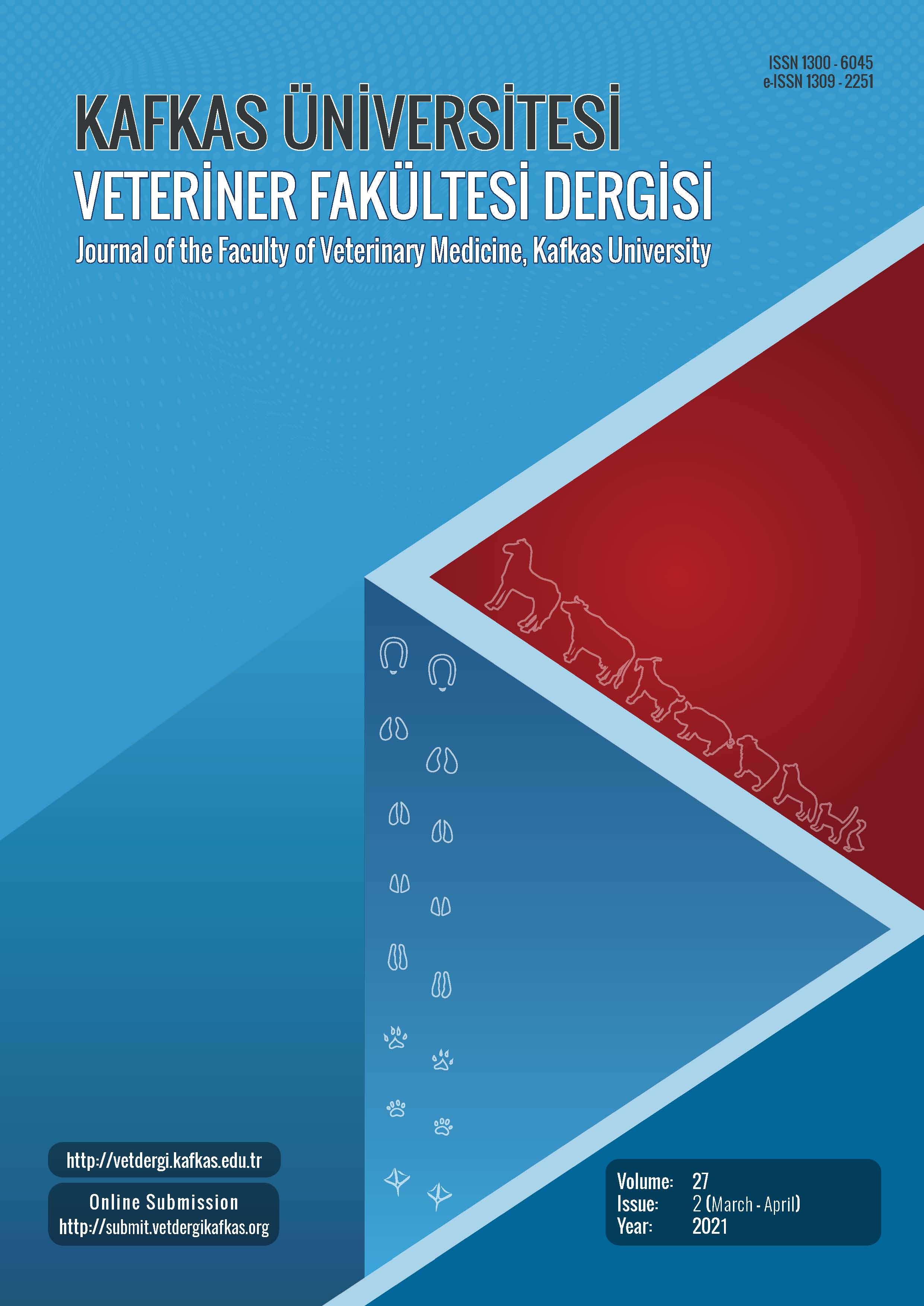
This journal is licensed under a Creative Commons Attribution-NonCommercial 4.0 International License
Kafkas Üniversitesi Veteriner Fakültesi Dergisi
2021 , Vol 27 , Issue 2
Detection of Botulinum Neurotoxin Serotypes C and D, and Their Effects on Expressions of SNAP-25 and Synaptobrevin in Ruminants: An Immunohistochemical Study
1Selçuk University, Faculty of Veterinary Medicine, Department of Pathology, TR-42130 Konya - TURKEY2Kastamonu University, Faculty of Veterinary Medicine, Department of Pathology, TR-37200, Kastamonu - TURKEY DOI : 10.9775/kvfd.2020.25060 In humans and animals, botulism is a disease characterized by generalized and progressive paralysis caused by Clostridium botulinum neurotoxins (BoNT). BoNTs, defined in seven diff erent antigenic types (A to G), proteolyze SNAREs (synaptosomal-associated protein/SNAP-25 and synaptobrevin) responsible for acetylcholine release in peripheral cholinergic neurons, and thus cause fl accid paralysis and death. Currently, mouse experiments are considered the reference method for definitive diagnosis. However, new diagnostic methods that are fast and accurate and would not raise ethical issues need to be developed. Therefore, using antibodies specific to the toxoid forms of BoNTs, the presence of BoNT-C and/or BoNT-D was investigated by immunohistochemical method (IHC) in the study. The tissues of thirty ruminants (twenty cattle, seven sheep, three goats), which had the clinical and pathological findings of botulism and a herd history of the disease, were used as material. BoNTs were detected with IHC in sixteen of the thirty ruminants as three BoNT-C, eleven BoNT-D, and two BoNT C+D. In the mouse experiments, BoNT was isolated in only three cases (two BoNT-D, one BoNT-C). Additionally, being responsible for the clinical findings of botulism, the interaction of BoNTs with SNAP-25 and synaptobrevin was investigated using IHC. It was determined that BoNT-C specifically reduces the expression of SNAP-25, and BoNT-D reduces the expression of synaptobrevin and partially SNAP-25. It was concluded that additional studies may be valuable to investigate the use of IHC in the diagnosis of botulism. Keywords : BoNT-C, BoNT-D, SNAP-25, Synaptobrevin, Immunohistochemistry










